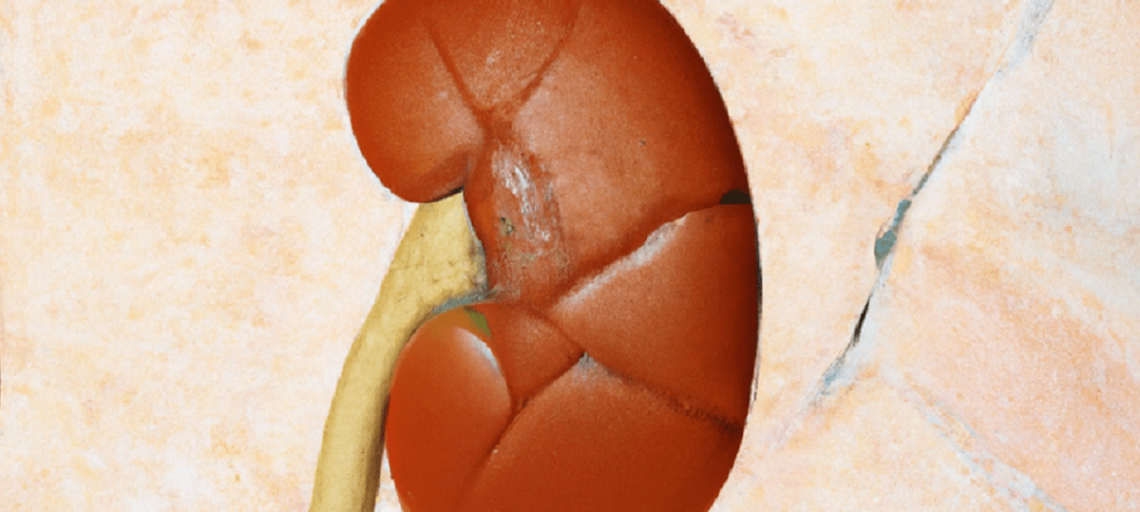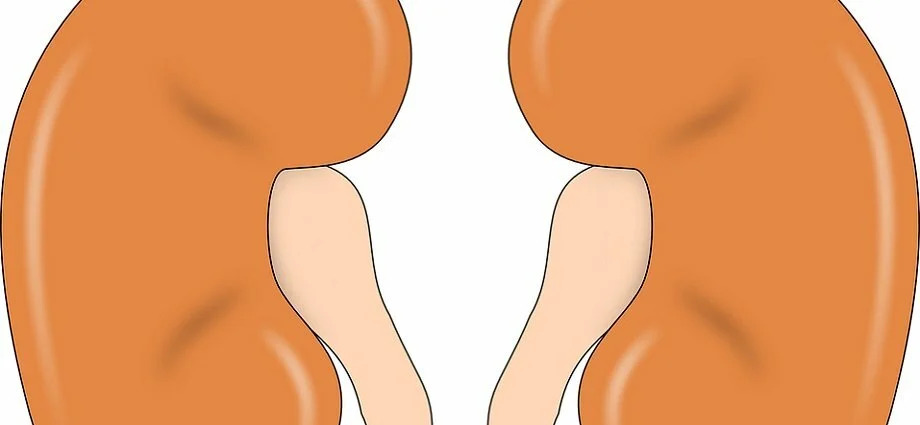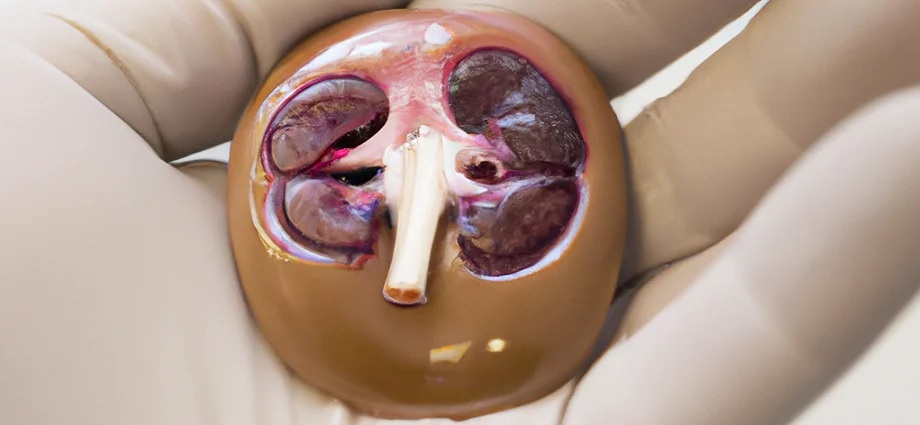
Kidney Stone Size Chart in CM and MM
Kidney stones, or renal calculi, are solid deposits made of minerals and salts that develop in the kidneys. They come in different sizes, from tiny grains of sand to large as golf balls. The size of the kidney stone is important in deciding how to treat it.
What Are Kidney Stones?
Kidney stones form when certain substances like calcium, oxalate, and uric acid build up in the kidneys. These substances can crystallize and create solid masses. Kidney stones can develop in one or both kidneys and may be single or multiple in number.
How Kidney Stone Size is Measured?

Kidney stone size is usually determined using medical imaging techniques such as X-rays, ultrasound, or computed tomography (CT) scans. These methods help doctors see the stones and accurately measure their size.
- X-rays: Bright spots on X-ray images show kidney stones, and their size can be measured using a ruler or computerized tool.
- Ultrasound: Sound waves create images of organs, including kidney stones, which can be measured on the screen by the technician or doctor.
- Computed Tomography (CT) scan: These scans provide detailed pictures of the body and are great for diagnosing kidney stones. CT scans can measure the size of stones accurately in three dimensions using special software or manual measurement.
Kidney stone size is usually reported in millimeters (mm), referring to the stone’s largest dimension. For instance, a stone measuring 10 mm means it’s 10 mm across. Size matters in deciding treatment, with larger stones possibly needing more invasive procedures for removal or breaking.
Factors Influencing Kidney Stone Size
Several factors can affect the size of a kidney stone. Here are some important ones:
- Duration of stone growth: The longer a kidney stone remains untreated, the larger it can become.
- Composition of the stone: Different types of stones grow at different rates. For example, uric acid stones tend to grow more slowly than calcium oxalate stones.
- Urine chemistry: The concentration of substances like calcium, oxalate, and uric acid in your urine can influence how fast a stone grows. Higher concentrations of these substances can create conditions favorable for stone formation and growth.
- Fluid intake: Not drinking enough fluids can lead to dehydration, which is a major risk factor for kidney stones. Concentrated urine due to dehydration can promote the formation and growth of stones.
Kidney Stone Size Chart in MM

Kidney stones can form anywhere in the urinary tract, from the kidneys to the bladder. These stones develop when minerals in the urine become concentrated and solidify, leading to discomfort and intense pain. Luckily, not all kidney stones need surgery to be removed. Medication can help pass some types of stones naturally through urine, depending on their size.
Kidney stones come in various sizes, ranging from tiny crystals to large stones as big as a golf ball. Different treatment options are available based on their size. Smaller stones can often pass through the urinary tract without trouble. To understand better, let’s look at a kidney stone size chart in millimeters.
| Kidney Stone Size | Causes | Shape | Chances of Passing Naturally | Treatment Options |
| Less than 2 mm | Dehydration, excess calcium, uric acid, or oxalate in urine | Usually round and smooth | Very high (80-90%) | Usually passes out of the body naturally. |
| 2-4 mm | Dehydration, excess calcium, uric acid, or oxalate in urine | Can be round or jagged | High (50-70%) | May pass naturally with pain medication and drinking plenty of water, or with medication to aid passage. |
| 5-7 mm | Dehydration, excess calcium, uric acid, or oxalate in urine | Can be round or jagged | Moderate (30-50%) | Extracorporeal shock wave lithotripsy (ESWL) or ureteroscopy |
| 8-10 mm | Dehydration, excess calcium, uric acid, or oxalate in urine | Usually jagged and irregular | Low (10-20%) | Percutaneous nephrolithotomy (PCNL) or open surgery |
| Larger than 10 mm | Dehydration, excess calcium, uric acid, or oxalate in urine | Usually irregular and difficult to pass | Very low (<10%) | Percutaneous nephrolithotomy (PCNL) or open surgery |
Classifying Kidney Stone Sizes
Kidney stones are usually classified based on their size, which helps doctors assess the severity of the condition and select the appropriate treatment. Here’s a common way they’re categorized:
- Small Stones: These are usually 4 to 6 millimeters in diameter. They might pass through the urinary tract without causing much discomfort or needing medical help.
- Medium Stones: These are also around 4 to 6 millimeters wide. They have a higher chance of causing discomfort and blockages, but they can still pass naturally with more fluids and proper care.
- Large Stones: These are about 6 to 8 millimeters in diameter. They often need medical procedures like shockwave therapy or ureteroscopy to remove them.
- Giant Stones: These are larger than 8 millimeters across. They’re a big health risk and typically require surgery to be removed safely.
Kidney Stone Size Chart in CM

Healthcare professionals usually measure kidney stones in millimeters (mm) or centimeters (cm), and the size of the stone is crucial in deciding the right treatment. In this part, we’ll talk about the kidney stone size chart in centimeters (cm).
Overview of the Kidney Stone Size Chart
The kidney stone size chart in cm is a useful tool to categorize kidney stones based on their size. This chart helps urologists determine the best course of action for treating kidney stones based on their size.
| Size Category | Size Range (cm) | Symptoms | Treatment Options |
| Less than 0.4cm | 0.1-0.4 | Usually asymptomatic, may cause mild discomfort | Observation, increased fluid intake |
| 0.4cm-0.6cm | 0.4-0.6 | May cause severe pain, blood in urine, difficulty urinating | Observation, increased fluid intake, medications, ESWL |
| 0.6cm-0.7cm | 0.6-0.7 | May cause severe pain, blood in urine, difficulty urinating | Observation, increased fluid intake, medications, ESWL, ureteroscopy |
| 0.7cm-0.9cm | 0.7-0.9 | May cause severe pain, blood in urine, difficulty urinating, fever, chills | Observation, increased fluid intake, medications, ESWL, ureteroscopy, PCNL |
| Greater than 0.9cm | Greater than 0.9 | May cause severe pain, blood in urine, difficulty urinating, fever, chills | Observation, increased fluid intake, medications, PCNL, open surgery |
Size Categories
There are five size categories in the kidney stone size chart in cm:
- Less than 0.4cm: Stones in this category are considered small and have a high chance of passing naturally without medical intervention.
- 0.4cm-0.6cm: Stones in this category are slightly larger and have a moderate chance of passing naturally. Medical intervention may be necessary if the stone does
- 0.6cm-0.7cm: Stones in this category are larger and have a low chance of passing naturally. Medical intervention is usually necessary to remove these stones.
- 0.7cm-0.9cm: Stones in this category are very large and have a very low chance of passing naturally. Surgery or other invasive procedures are typically required to remove these stones.
- Greater than 0.9cm: Stones in this category are extremely large and cannot pass naturally. Surgery or other invasive procedures are the only option for removing these stones.
Kidney Stone Signs and Symptoms
Kidney stones can cause various signs and symptoms, which can differ based on the stone’s size, location, and movement within the urinary tract. Here are some common ones:
- Severe Pain: Intense pain, often sharp or cramping, usually starts in the back or side below the ribs. It can also affect the groin and lower abdomen.
- Fluctuating Pain: The pain can come in waves, with periods of intense pain (called renal colic) followed by relief. The duration and severity of pain episodes can vary.
- Hematuria: Blood in the urine can make it pink, red, or brown.
- Frequent Urination: Kidney stones can irritate the urinary tract lining, causing more frequent urination and discomfort.
- Urgency and Burning Sensation: Some people feel a need to urinate urgently, even when the bladder isn’t full. Burning during urination (dysuria) can occur too.
- Cloudy or Foul-Smelling Urine: Kidney stones might change the appearance and smell of urine, making it look hazy or smell bad.

Treatment of Kidney Stone Size Chart
Here’s a chart that summarizes the likelihood of passing a kidney stone naturally and the potential treatment options based on size:
| Size of kidney stones | Chances of passing naturally | Treatment |
| Less than 4 mm | Up to 90% | Drinking plenty of fluids, pain medication, and alpha-blockers to relax the muscles in the ureter and help the stone pass more easily. |
| 4-6 mm | About 60% | Home remedies like increased fluids, pain medication, and sometimes alpha-blockers. In some cases, shockwave lithotripsy (ESWL) may be needed. |
| 6-10 mm | Less than 40% | ESWL or ureteroscopy may be recommended. |
| Larger than 10 mm | Unlikely | Percutaneous nephrolithotomy (PCNL) is a surgical procedure that may be needed. |
Frequently Asked Questions
Is a 4 mm kidney stone big?
A 4 mm kidney stone is relatively small, about the size of a small pebble. Its smaller size generally makes it easier to pass compared to larger stones. However, passing a kidney stone depends on individual factors and it's best to consult a healthcare professional for evaluation and treatment.
Are smaller kidney stones easier to pass?
Generally, smaller kidney stones have a higher likelihood of passing naturally without medical intervention. However, it's important to consult a healthcare professional for proper evaluation and guidance based on individual circumstances.
Can kidney stone size increase over time?
Kidney stones can grow over time due to the accumulation of minerals and other substances. Regular monitoring and appropriate treatment can help prevent stone growth and associated complications.
Is a 6 cm kidney stone big?
Yes, a 6 cm kidney stone is considered large. Kidney stones can range in size from small grains to several centimeters. A 6 cm kidney stone is significantly larger than average and may pose challenges in terms of passing naturally.
What size is considered to be a large kidney stone?
In general, a kidney stone is considered large if it measures 5 millimeters (0.2 inches) or larger in diameter. However, the size alone may not always determine the level of pain or difficulty associated with passing the stone. Other factors such as the shape, location, and composition of the stone can also influence the severity of symptoms and the treatment approach. It is always best to consult with a healthcare professional for a proper evaluation and guidance if you suspect you have a kidney stone.





